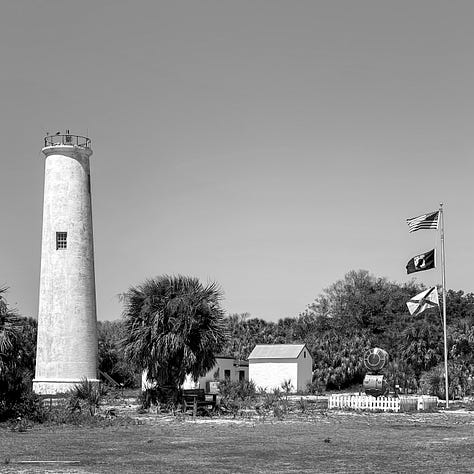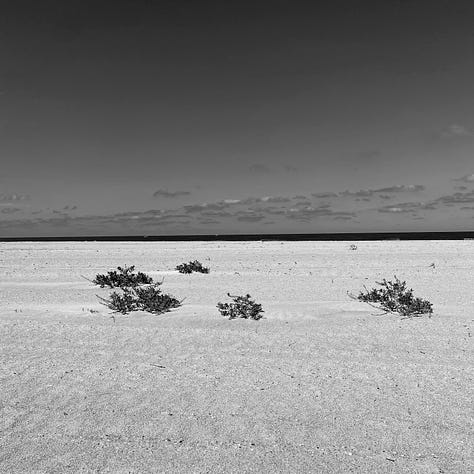The concept of space and its memory profoundly influence the human psyche, often catalyzing deeper introspection and understanding of our place within the world. A recent visit to Egmont Key, a small island in front of Fort DeSoto National Park in the United States, is a compelling case study exploring spatial memory and its impact on individual perception and emotional resonance.
This island, with its historical backdrop as a defense outpost equipped with batteries, water and ice plants, food processing units, and administrative buildings, now stands as a ghost of its former self, housing only a few remnants of its past: a museum, the home of the island's manager, and the last functioning lighthouse in Florida.
The striking experience at Egmont Key evoked a profound, unexpected connection to Paraguaná, an arid region northwest of Venezuela. This connection transcends the mere visual or geographical similarities between the two locations. Instead, it speaks to the power of landscapes to act as vessels of memory and emotion, capable of transporting individuals across time and space through presence and observation.
In their silence, landscapes speak volumes about the lives and histories embedded within their terrains. Paraguaná, with its harsh yet mesmerizing aridity, encapsulates a physical space and a state of mind—a reflection of the people who inhabit it and a mirror to the soul's contemplations.
Similarly, despite its geographical location within the United States, Egmont Key diverged entirely from the expected American landscape. Instead, it resonated with the essence of Paraguaná, where every ruin, stone trail, dune, sea, and solitary tree stood as a testament to a deeper, symbiotic relationship between the observer, the landscape, and the memories harbored within.
This resonance underscores the notion that our interaction with landscapes is far from superficial. It is a profound communion, where each element—the tactile feel of the ruins, the visual tapestry of the trails, and the olfactory memory evoked by the sea breeze—converges to create a unique, unspoken dialogue between the self and the surroundings.
The encounter at Egmont Key epitomizes the metaphysical relationship between an artist and the landscape. As a photographer, capturing images is not merely a physical action but a deeply emotional and spiritual experience. The camera serves as an extension of the body, a tool through which one can interpret and immortalize the ephemeral dialogue between humans and habitat. This symbiotic relationship is evident in the profound sense of connection felt at Egmont Key, reminiscent of the emotional and psychological state evoked by Paraguaná. It is a reminder that landscapes are not just physical spaces but entities with which we can interact on a profoundly personal level, allowing for reflections on identity, memory, and existence. (see my series “Paraguaná: dilemas luminiscentes)
Within the narrative of exploring the profound connection between landscapes and memories, an anecdotal element further enriches this tale of discovery and resonance. It concerns a pair of trekking shoes and companions on a myriad of journeys across the diverse terrains of Venezuela. These shoes, after years of faithful service through over a dozen trips to the arid landscapes of Paraguaná, five adventurous treks to the majestic Roraima Tepuy, along the coastlines, and across the tundra, encountered their final adventure at Egmont Key. This detail adds a poignant layer to the story, symbolizing the physical journeys undertaken and the wear and tear of time and memory on the objects with which we traverse these spaces.
The surrender of these trekking shoes on Egmont Key marks a moment of reflection and transition. It is emblematic of the journey’s impact on the self and the material companions that facilitate such explorations. These shoes, bearing the scars and dust of varied Venezuelan landscapes, became silent witnesses to the symbiotic relationship between the traveler, the camera, and the natural world. Their "retirement" on Egmont Key is a metaphor for the cycle of exploration and discovery, connections made, and memories forged, highlighting the transient nature of our interaction with the world around us.
In the context of this story, the trekking shoes transcend their utilitarian purpose, becoming artifacts imbued with the essence of each journey. Their final resting place amidst the ruins and natural beauty of Egmont Key underscores the theme of resonance between different spaces and the memories they hold. It is a testament to the passage of time, the accumulation of experiences, and the profound impact of landscapes on the human spirit.
Accompanying this narrative are photographs that serve as tangible evidence of the encounter with Egmont Key and its parallels with Paraguaná. These images are more than mere visual records; they are portals to the intangible, offering glimpses into the unspoken dialogue between the observer and the observed, the internal and the external. They capture the essence of the landscapes, highlighting the profound impact such spaces can have on the individual psyche and the collective memory.









The experience at Egmont Key, with its uncanny resemblance to the memories and emotions tied to Paraguaná, illustrates the complex relationship between space, memory, and identity. It underscores the capacity of landscapes to serve as catalysts for introspection, revealing the layers of meaning and connection that lie beyond the visible and tangible. In this light, landscapes become not just subjects of photographic capture but active participants in a dialogue that transcends time, space, and language, offering insights into our deepest selves and the shared human experience.




